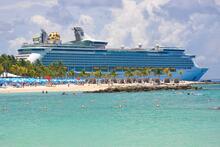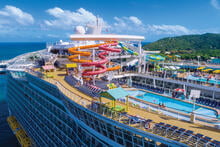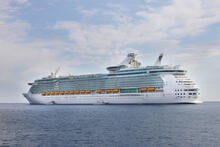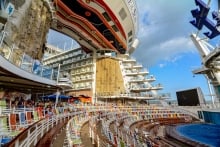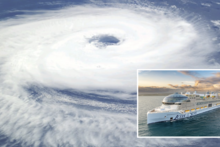Some of the best values on a Royal Caribbean cruise can be found on transatlantic itineraries, but what is it really like to spend nearly two weeks at sea?
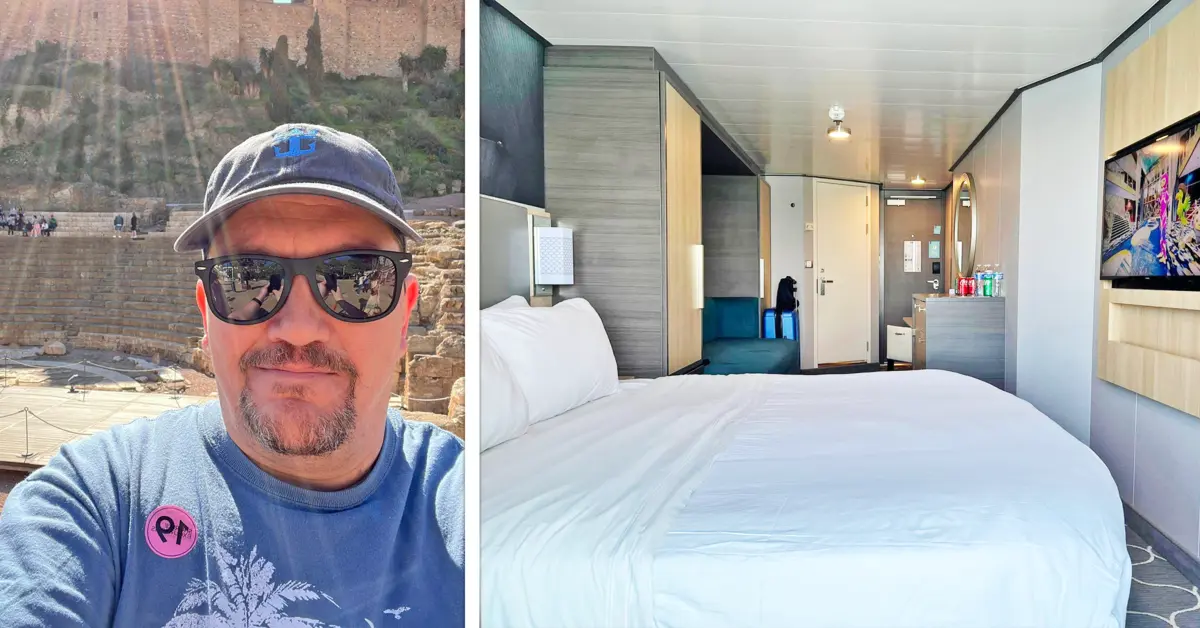
A repositioning cruise is an itinerary that repositions a ship from one homeport to another, and it's quite different from a regular cruise itinerary. These sailings typically feature a large number of sea days while traveling between continents. They are also longer than most cruises—usually between eleven and eighteen nights.
Royal Caribbean Blog reader Josh Crothers recently sailed on a 12-night Symphony of the Seas cruise from Miami to Barcelona. The itinerary included ten days at sea, and he’s sharing his repositioning cruise experience with us today.
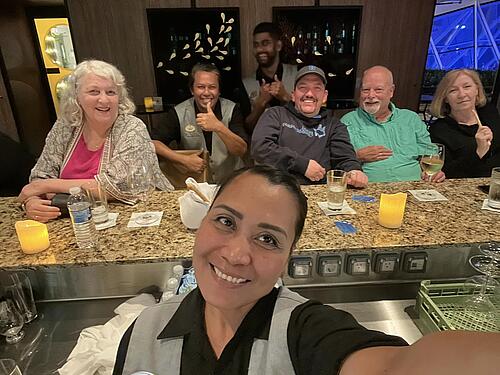
We asked him how his experience differed from a regular Royal Caribbean cruise, whether or not he felt stir crazy onboard with so many sea days, and how much he paid for his sailing across the pond.
Let’s dive in and learn more about these unique Royal Caribbean cruise itineraries.
Josh found an incredible deal on his transatlantic cruise, which gave him the impetus to book the sailing.
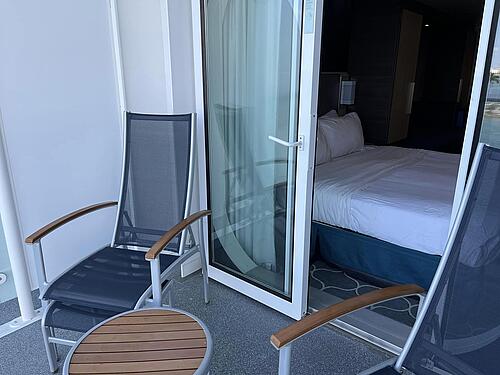
“The price was amazing. I paid less than $1,100 for an oceanview balcony cabin solo. I have more than 340 Crown & Anchor Society Points, so I was able to use that discount as well,” he explained.
Related: Crown and Anchor Society loyalty program info, tips & secrets
Spending $1,100 for a 12-night cruise brings the price per night to only $91, which provides an excellent value on a two week vacation in a balcony cabin. It also includes accommodation, food, drinks, activities, and entertainment!
Additionally, Josh was able to use airline miles for his flight to Miami to board the cruise and his flight home from Barcelona after the cruise, which saved him hundreds of dollars.
When crossing from the United States to Europe, you pass through many time zones. We asked Josh how Royal Caribbean handled the time zone changes onboard.
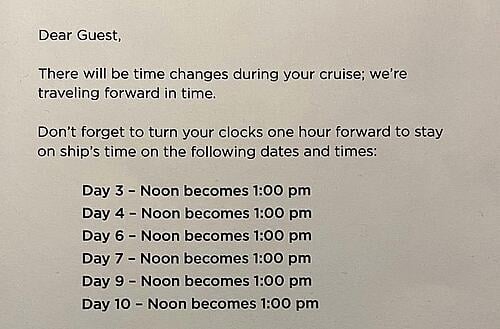
“We had six time changes during our cruise, moving one hour ahead on days three, four, six, seven, eight, and ten,” Josh said. “Day three coincided with the change from Standard Time to Daylight Savings time for a net of moving five hours ahead.”
On his transatlantic cruise, the time changes occurred at noon, which meant it went from 11:59AM to 1PM! The ship’s captain explained how the reason for the midday time zone change was for the crew members.
A westbound transatlantic cruise sees the time change at 2AM each night, giving passengers an extra hour of sleep. On an eastbound transatlantic, however, changing the time forward at 2AM would result in crew members losing an hour of sleep at every time zone change.
Josh’s transatlantic cruise had ten sea days and two port days. With so many days at sea and so few port days, we were curious if Josh felt bored when crossing the Atlantic.
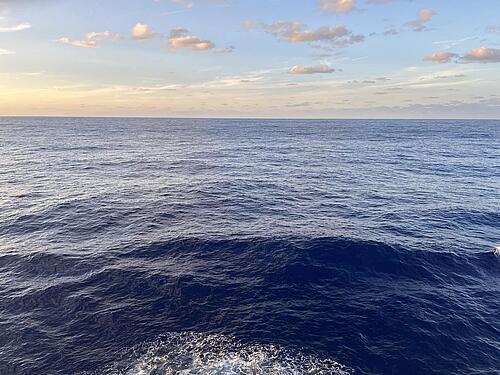
“I love sea days,” Josh shared. “This cruise had ten sea days straight, so it was an excellent opportunity to relax and recharge without the hustle and bustle of getting ready to go ashore each morning. I looked at this cruise to relax and recharge. A routine was developed during the sea days, and I quite enjoyed that.”
Josh explained his daily schedule as follows:
- Woke up with the Cruise Director’s announcement at 9:30AM
- Lounged around his cabin until lunchtime
- Ate lunch at the Windjammer or Dog House
- Post-lunch afternoon nap or worked on personal projects
- Dinner at the Windjammer followed by a trip to the casino
- Drinks at Vintages until 10PM
- Drinks at the pub until closing time at 1AM
- Go back to the cabin or visit the casino a second time

With so many dining venues on Symphony of the Seas, Josh was able to eat at a variety of restaurants, from the Windjammer to specialty restaurants, and this helped combat the monotony of spending so many days at sea in a row.
In addition, Josh’s Symphony of the Seas cruise visited two ports in Spain: Valencia and Málaga. He had been to Valencia on a prior cruise, so he stayed onboard while there. In Málaga, however, Josh booked a city tour shore excursion from Royal Caribbean.

“It was very walking intensive and we had a pretty good tour guide,” he mentioned. “It was a good, solid look at Málaga.”
Most cruisers assume transatlantic cruises will have an older passenger demographic onboard with few kids and families. Josh mentioned how this was not the case on his Symphony of the Seas cruise.
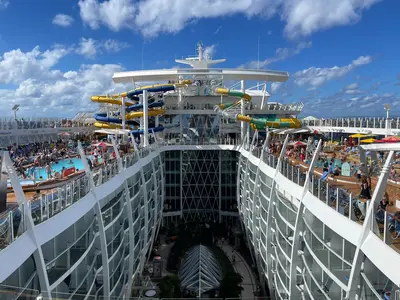
“There were kids onboard, more than was expected for sure,” he said. “I believe the estimate was about 500 kids onboard.”
Because Symphony of the Seas caters heavily to families, it’s understandable that there were many kids onboard. With a zip line, ice skating rink, rock climbing, and surfing simulator, there are plenty of ways to keep kids entertained with so many days at sea.
Josh noted that there was a pretty even mix of retirees and families, and that all age groups were represented onboard. The ship had a mix of both Americans and Europeans, and there were many solo passengers onboard as well.
Most cruisers have never booked a transatlantic sailing before. We asked Josh what the major differences are between a 7-night cruise and a transatlantic cruise.
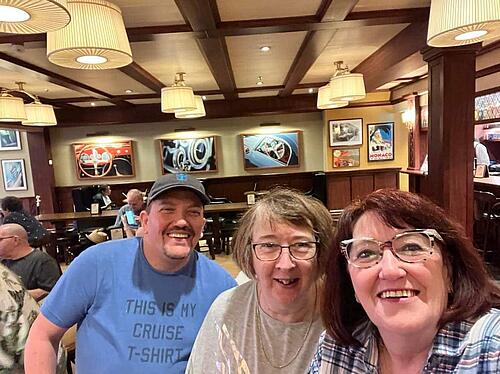
The first difference Josh mentioned is that you have more time onboard.
“You don’t feel rushed to do everything and see everything,” he explained. “You have time to fully experience the ship and all it has to offer.”
The second difference was perhaps the most notable difference. With much more time onboard, a transatlantic cruise gives you the chance to get to know your fellow passengers and crew members better than on a short sailing.
“You just have more time to develop those relationships. There’s more time to talk and get to know one another, more time to get to know the bartenders and stateroom attendants. The more we got to know each other, the better the service got. And you meet and make more friends just because you have time to get to know them more!”

Josh’s third difference was that there are more sea days to relax and recharge. Most 7-night cruises only have two or three sea days, so having ten sea days on a 12-night cruise leads to much more time spent onboard. Of course, while this may work for some passengers, others may prefer a more port-intensive itinerary.
With so much time at sea, though, you have the ability to completely relax without worrying about getting off the ship and planning days in port. By the time the cruise is over, you can expect to feel completely recharged.
Finally, we asked Josh whether or not he would recommend a transatlantic cruise to others, and if he could share any advice for those planning a repositioning cruise.
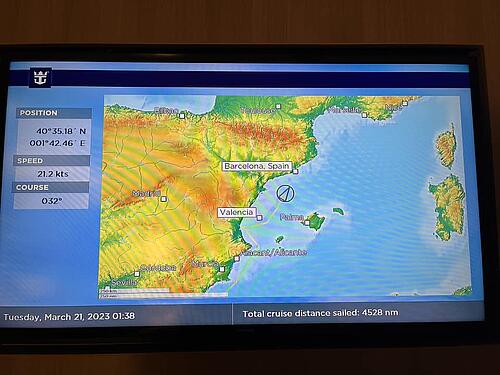
Josh said he would absolutely recommend a transatlantic cruise, but that he prefers a westbound itinerary (Europe to the US) over an eastbound sailing (the US to Europe). The reason he prefers this is because if you fly to Europe and spend a few long, busy days sightseeing, you can relax off the exhaustion on the cruise back to Florida.
“I think flying [to Europe] a few days early to explore and experience Europe—and then cruise home—is a more pleasant experience,” he mentioned.
Josh’s biggest piece of advice for those planning a transatlantic cruise is to not try to cram activities into every day. He advises spreading out your activities and relaxing to ensure you don’t get burned out on such a long itinerary.
Have you ever booked a transatlantic or transpacific cruise with Royal Caribbean? If so, how was your experience? Let us know in the comments below!



